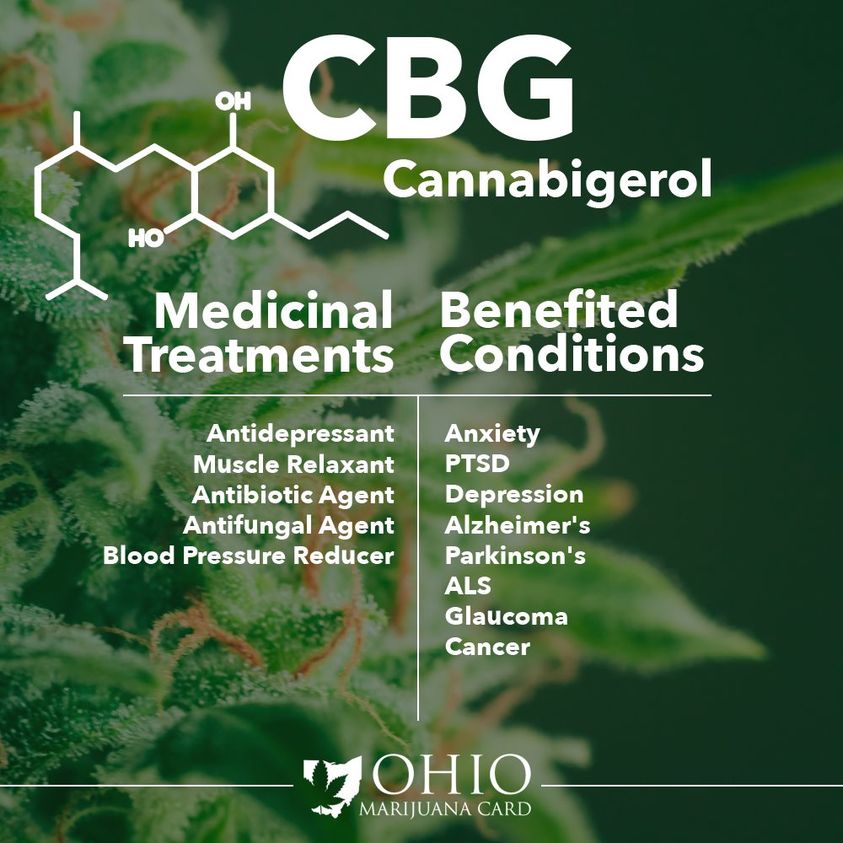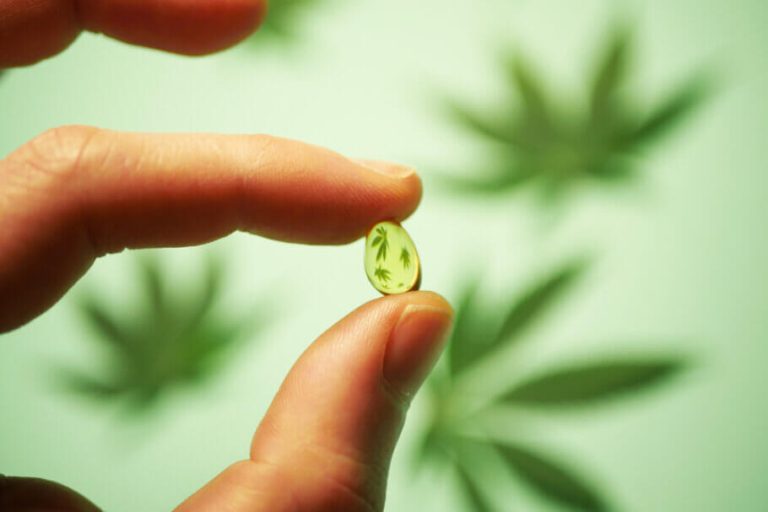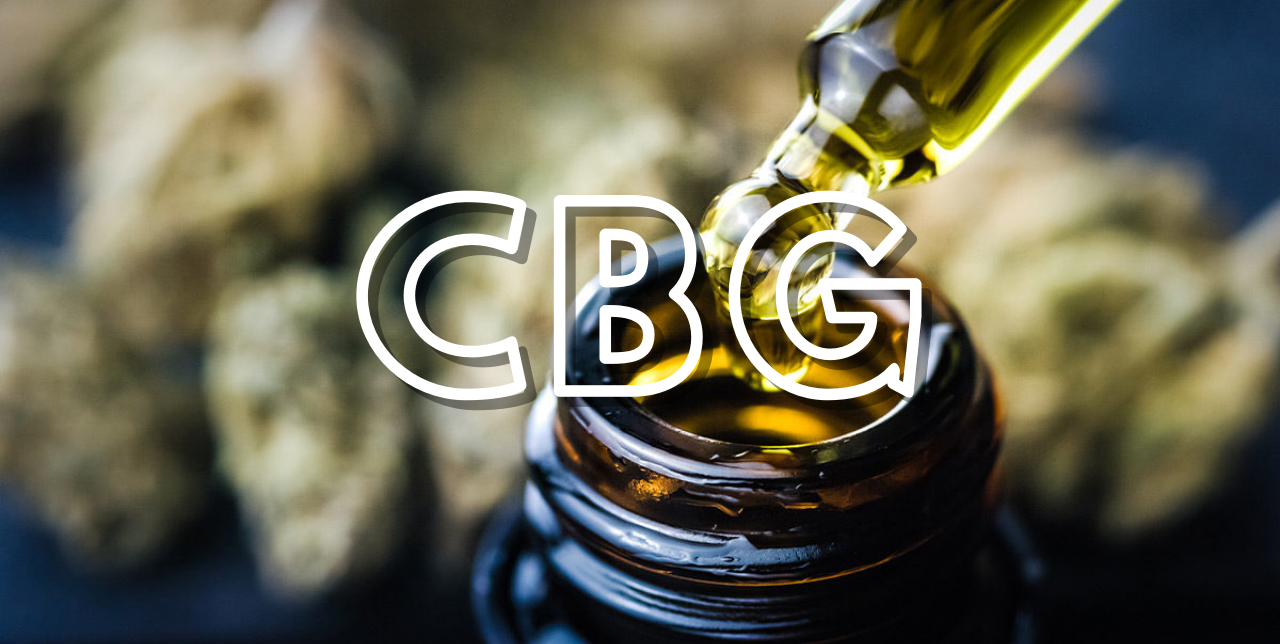CBG. Sometimes referred to as the “new cannabinoid on the block,” or the “mother of all cannabinoids,” CBG is yet another compound extracted from cannabis plants with serious medicinal potential. Like THC and CBD, CBG is a phytocannabinoid—meaning a cannabinoid produced by a plant. Like CBD and THC, CBG mimics our bodies’ own endocannabinoids—cannabinoids produced by our own bodies. This gives CBG the ability to interact with endocannabinoid system receptors and to produce a host of salubrious effects. CBG is gaining popularity, as studies begin to show that it may be effective for Glaucoma, Huntington’s Disease, Cancer and more. Read on to learn more about this fascinating cannabinoid.
What Is Cannabigerol (CBG)?
CBG is often called the “mother of all cannabinoids” because the acidic form of CBG—called CBG-A—is the precursor chemical from which other cannabinoids like CBG, CBD, THC, and CBC are produced.

Cannabigerol is considered a “rare” cannabinoid because it occurs in such minute quantities, usually less than 1% of plant mass. Compare that to 20-30% plant mass for THC or CBD. Like other “rare” cannabinoids such as THCV, CBC, CBN, CBDA, and delta-8-THC, extracting significant quantities of cannabigerol is more is more expensive due to it’s rarity in plants. Like CBD, CBG is a powerful anti-inflammatory and anti-oxidant, which is why it is thought to have potential for helping with certain kinds of cancer, neurodegenerative diseases, and the various kinds of pain that come with those conditions.
How is CBG made?
Over the years, growers have discovered a few tricks to increase the amount of cannabigerol they can get out of cannabis plants. CBG is more prevalent in young plants compared to fully grown plants. Also, some cannabis strains like Super Glue CBG, White CBG, and Jack Frost CBG have higher cannabigerol content. Growers will cultivate these strains specifically for their higher cannabigerol yields.
Still, extracting and isolating significant quantities of CBG is still an expensive process. Growers continue to experiment with genetics and cross-breeding in the hopes of coaxing cannabis plants into producing more cannabigerol.
Because CBG is still one of the most expensive cannabinoids to produce it is sometimes dubbed “the Rolls-Royce of cannabinoids.”
“It takes thousands of pounds of biomass to create small amounts of CBG isolate,” said James Rowland, CEO of Steve’s Goods, when speaking to Forbes
So how does cannabigerol work?
Like CBD and THC, CBG’s effects are felt as a result with interactions with the human endocannabinoid system (ECS). The ECS is a vast, complex system distributed through the body of all vertebrates, and it’s job is to promote homeostasis—a state of balance and optimal functioning for all internal systems. The ECS regulates all other major systems in the body and impacts everything from appetite to anxiety, to pain and inflammation, to hormones, to sleep, to immune system responses and much more.
Additional resource: Read our article about the endocannabinoid system and cannabinoids.
Through it’s interaction with the ECS, cannabigerol is able to produce powerful neuro-protective, anti-oxidant, anti-anxiety, and anti-inflammatory effects. Neuro-degeneration and inflammation are the root of a tremendous number of diseases and conditions, think dementia, Alzheimer’s, Parkinson’s, multiple sclerosis, cancer, heart disease, diabetes, arthritis and Huntington’s disease, just to name a few. Therefore, compounds with neuroprotective and anti-inflammatory qualities can play a significant role in staving off and reducing the symptoms of these diseases.
When cannabigerol interacts with ECS receptors CB1 and CB2, it’s thought to boost anandamide signaling. Anandamide—also known as the “bliss molecule” is a neurotransmitter believed to play a role in motivation, pleasure, appetite, sleep as well as pain.
Like cannabidiol, cannabigerol does not create any intoxicating effects. It won’t get you “high”.

Is CBG Neuroprotective?
A number of studies indicate that cannabigerol is an effective neuroprotective. In some regards, it may even exceed the neuroprotective effects of CBG. Most of the relevant studies done so far are animal studies, but the results so far are encouraging.
In one animal study comparing the neuroprotective effects of cannabidiol and cannabigerol, scientists mimicked the effects of neurological diseases on rat tissue. When brain and spinal cord cells were exposed to toxicity, they found that “CBG was more potent than CBD in blunting neurotransmitter depletion.” CBG also proved more effective in counteracting exposure to toxicity in rat cortexes.
Another study conducted on mice for Huntington’s disease found that cannabigerol helped improve antioxidant defenses, preserve striatal neurons and improve motor function. Researchers commented that “CBG was extremely active as neuroprotectant.”
The study concluded that “Our results open new research avenues for the use of CBG, alone or in combination with other phytocannabinoids or therapies, for the treatment of neurodegenerative diseases such as HD.”
In one study on mice, researchers found that cannabigerol’s neuroprotective effects reduced “inflammation-driven neuronal deterioration in experimental Parkinson’s disease.”
Another 2018 in vitro study found that CBG helped reduce neuronal death, oxidative stress and neuroinflammation—an inflammatory response particular to the brain and spinal cord. Researchers found that, “In particular, CBG restored cell anti-oxidant defense.”
Does CBG work for pain?
Chronic and long-lasting pain issues affect a great many people. A good 20% off US adults suffer from such conditions.
One of the big reasons people have started turning to cannabis medicine like CBD, THC and CBG, is because these natural alternatives are gentler on the body. In fact, one 2018 study of patients with headache, migraine, arthritis, and chronic pain and found that between 41.2 to 59.5% found cannabis medicine was an able substitute to prescriptions medications.
Interestingly, one clinical study found that THC had double the anti-inflammatory power of hydrocortisone, and 20 times more anti-inflammatory power than aspirin. THC delivered this superior anti-inflammatory performance without the harsh side-effects of non-steroidal anti-inflammatory drugs (NSAIDS), including internal bleeding.
Not everyone wants a strong dose of THC though, as it can be very intoxicating. If you need to work, drive, compete in professional sports, THC is not an option.
One of the reasons cannabigerol is getting more attention is because it appears to be a superior to THC in several respects. One study reported that “CBG may hold great promise as an anti-oxidant agent” and “CBG has more potent analgesic (pain-relieving), anti-erythema (anti-inflammatory rash) and lipoxygenase (inflammation) blocking activity than THC.”
These are preliminary results from studies mostly conducted on animals. Though CBG does seem to show much promise, far more research needs to be conducted, especially on humans, before we truly understand CBG’s potential.
What are some other potential benefits of cannabigerol?
Preliminary research indicates CBG may hold promise for a variety of conditions:
- Bladder dysfunctions. In one study comparing the performance of 5 different cannabinoids, CBG came out on top, showing the most promise for helping with bladder dysfunctions.
- Huntington’s disease. One 2015 study indicates CBG’s neuroprotective properties may hold potential for treating Huntington’s disease as well as other neurodegenerative conditions.
- Inflammatory bowel disease. Another animal study indicated that CBG reduced inflammation from inflammatory bowel disease.
- Glaucoma. Glaucoma is a result of optic nerve damage, which is sometimes the result of elevated intra-ocular pressure. Studies show CBG reduces intraocular pressure (and increasing flow of ocular fluids by 2 to three times in animal studies), so it holds promise in treating this condition.
- Cancer. A 2014 experiment on mice showed CBG inhibited colon cancer cell and tumor growth. through the TRPM8 channel. CBG inhibited the growth of xenograft tumours as well as chemically-induced colon carcinogenesis. CBG hampers colon cancer progression in vivo and selectively inhibits the growth of CRC cells,” the researchers said.
- Bacterial infections. CBG may kill drug-resistant staph bacteria, as shown in a 2008 study.
- Appetite loss. Studies also show CBG may help those suffering from appetite loss due to HIV or cancer and associated treatments. It may prove to be another appetite-stimulating cannabinoid like THC.
CBG shopping tips
This product is much harder to find compared to CBD and THC. Finding quality product can require some leg work.
Here are a few helpful tips to help you on your way:
- Buy Full Spectrum, or Broad Spectrum CBD oils. Most Full Spectrum and Broad Spectrum CBD Oils also contain trace amounts of the so-called “rare” cannabinoids, including CBG, CBN, CBC and others. These are broadly available, and easier to find. The added benefit of these kinds of oils is that some research indicates that a variety of cannabinoids works better than just CBD or THC alone. This “entourage effect” is why many people prefer full spectrum CBD oil to a CBD-only oil.
- Ask for the lab tests. These should show the amounts of cannabinoid per volume of a product. If there is any CBG in the product, it should appear in the lab tests.
- Try to find high-CBG oils and oil blends. With increased interest, more brands are starting to create oils that contain higher concentrations of CBG and other rare cannabinoids.
Is cannabigerol safe?
Cannabinoids have proven quite safe and well-tolerated by humans, but not much research has been done about the safety of cannabigerol. As a result, we don’t really know if there are potential side effects, and which medications it might interfere with.
If considering taking cannabigerol, or any cannabis-based medicine, for the first time, speak to your medical professional first. This is especially important if you are currently on medications. To be safe, consider that CBG may interfere with medications the same way that grapefruit does.
Learn more about CBD

CBD and Stress: How Cannabinoids Help You Stay Calm in a Busy World
If it feels like life keeps getting louder and faster, you’re not alone.Between deadlines, notifications, and never-ending to-do lists, most of us are
read more
CBD Smoothie Recipes You’ll Actually Love
🥤 Simple, delicious ways to enjoy your daily CBD oil. Why Add CBD Oil to Your Smoothie? Smoothies are already a great way to
read more
A Calm Routine: How to Use CBD Skincare from Morning to Night
If your skincare shelf is starting to look more like a science lab, you’re not alone. These days, there’s a serum or cream
read more
From Mouse to Marathon: Can CBD Support Endurance Through the Gut?
Gut health has become a growing focus in the wellness world, and for good reason. The gut microbiome affects digestion, immunity, and even
read more
Microdosing CBD: Why Less is More
Many assume that more CBD means better results, but that’s not always true. Instead, taking smaller doses more frequently may be a smarter
read more
Sleep Naturally: How CBD, CBG, and CBN Can Enhance Your Rest
Quality sleep is essential, yet modern lifestyles often leave us restless. With rising stress levels and digital distractions, many are turning to natural
read more
